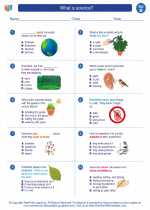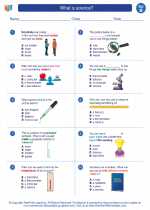Waves
Waves are a fundamental part of the natural world and can be found everywhere around us. They are a way that energy is transferred from one place to another without the transfer of matter.
Types of Waves
There are two main types of waves: mechanical waves and electromagnetic waves.
Mechanical Waves
Mechanical waves require a medium, such as air, water, or solid material, to travel through. They include sound waves and seismic waves.
Electromagnetic Waves
Electromagnetic waves do not require a medium and can travel through a vacuum. They include visible light, radio waves, microwaves, and X-rays.
Properties of Waves
Waves have several important properties, including wavelength, frequency, amplitude, and speed.
Wavelength
The wavelength of a wave is the distance between two corresponding points on the wave, such as two crests or two troughs.
Frequency
The frequency of a wave is the number of complete wavelengths that pass a point in a given time. It is measured in hertz (Hz).
Amplitude
The amplitude of a wave is the maximum displacement of a point on the wave from its rest position. It is a measure of the energy carried by the wave.
Speed
The speed of a wave is determined by the medium through which it is traveling. In a given medium, the speed of a wave is constant.
Wave Behavior
Waves exhibit several behaviors, including reflection, refraction, diffraction, and interference.
Reflection
Reflection occurs when a wave bounces off a surface, changing direction but not wavelength.
Refraction
Refraction occurs when a wave changes direction as it passes from one medium to another, due to a change in its speed.
Diffraction
Diffraction is the bending of waves around obstacles and the spreading of waves as they pass through openings.
Interference
Interference occurs when two or more waves overlap, resulting in the formation of a new wave pattern.
Applications of Waves
Waves have numerous practical applications, including communication, medical imaging, and energy transfer.
Communication
Electromagnetic waves, such as radio waves and microwaves, are used for wireless communication.
Medical Imaging
X-rays and ultrasound waves are used for medical imaging to visualize the internal structures of the body.
Energy Transfer
Waves are used to transfer energy, such as in the generation of electricity from wind and water waves.
By understanding the properties and behaviors of waves, we can harness their power for a wide range of practical applications.
[Waves] Related Worksheets and Study Guides:
.◂Science Worksheets and Study Guides Second Grade. What is science?

 Worksheet/Answer key
Worksheet/Answer key
 Worksheet/Answer key
Worksheet/Answer key
 Worksheet/Answer key
Worksheet/Answer key
 Vocabulary/Answer key
Vocabulary/Answer key
